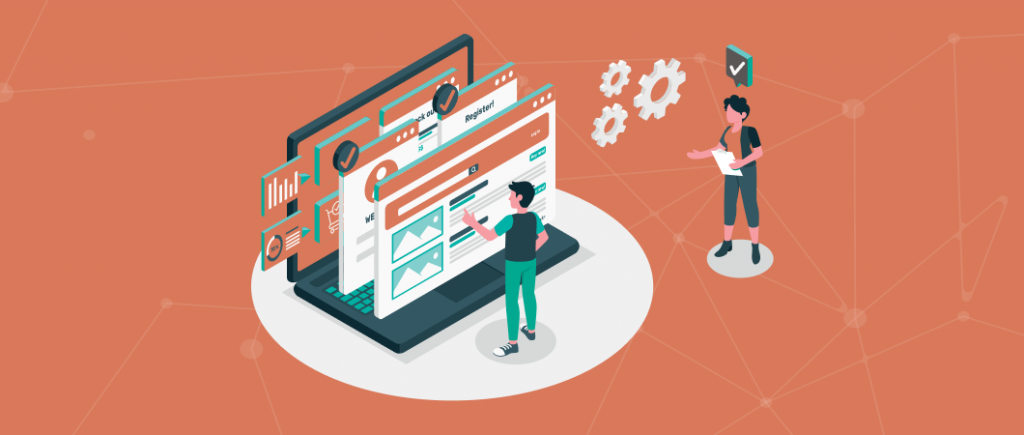Last updated on November 26th, 2022
“People ignore design that ignores people.”
— Frank Chimero, Designer
The importance of designing a user-centric user experience is indisputable. In today’s crowded product market, with users having thousands of options, you snooze, you lose. Usability testing has, hence, been an integral part of the product lifecycle.
To offer the end users a consistent, engaging, and enabling experience is imperative. Enterprises are heavily investing in user experience design as well as testing to make sure their product stands out. And for modern enterprise products, usability testing is a must-have.
Usability testing goes beyond market research and analysis. Let’s look at the nuances of usability testing and why enterprises must focus on it.
What is Usability Testing?
Usability testing is a procedure, method, or technique that determines how easy the product is to use for the end-user. With usability testing, the product owners and developers can understand how the end-user uses the product, the roadblocks, and the challenges they face, and whether or not they will find the product easy to use.
In usability testing, users (who are not a part of the development team or have never had prior experience in using it) use the products while the researchers note their usage flow and understand where the users face confusion. Usability testing is the next step of usability inspection where the product team predicts the typical user behavior and evaluates the efficiency of the product.
Types of Usability Testing
1. Moderated and unmoderated
Moderated usability testing happens under in-person or remote moderation of an expert researcher while unmoderated testing is undertaken by the end-user independently without any moderation.
2. Remote and in-person
Remote usability testing happens remotely over the internet/phone whereas in-person testing requires the test to be completed in the physical presence of a UX researcher.
3. Exploratory
In exploratory testing, the participants are asked to brainstorm the product, provide suggestions and opinions based on their impressions along with their ideas and expectations.
4. Assessment
In this type of usability testing, the product is rated purely on the ease of use and functionalities that design the user experience.
5. Comparative
The comparative method of usability testing involves the experience of using one product in comparison with its competitor and determining user preferences.
Benefits of Usability Testing
i) Feedback is obtained directly from the target audience
ii) Understanding of how different users react to different options in the product can be determined
iii) Potential challenges in the usability of the product can be fixed before the product hits the market
Importance of Usability Testing for Modern Products
The need for usability testing arises from understanding that typical user behavior cannot always be predicted and cannot be expected to be exactly like the product designer expects it to be. Usability testing helps in testing out the products with real users and customers and is not dependent on the feedback of the developers or testers, making it more practical and useful. The changes driven by usability testing are the changes the end-users need rather than what the developers assume or predict.
The era of remote working
The world is experiencing a paradigm shift in the way businesses operate. As more and more organizations resort to remote operations, enterprise products are largely being used by employees remotely. What this means for enterprise products is that the actual end-users are now remote and unmoderated. The entire focus of business leaders, as well as change managers and IT teams, is to ensure a smooth transition from office to remote working with minimum hiccups while keeping productivity up. Their focus is primarily on facilitating monitoring, collaboration, and communication.
Unplanned, unmoderated, remote usability testing is in process
While the enterprise product companies heavily relied on product experts to help the employees navigate their product, now these employees are pretty much on their own. The stumbling blocks the employees/end-users face as they use the product hampers their work and productivity. This impact now determines the effectiveness of the product for the users. Remotely working employees may or may not have IT support similar to when working from a conventional office, are most likely operating on a lower bandwidth, and might not have in-depth product documentation handy, to refer to.
Not-so silent comparison of enterprise vs non-enterprise products
There has always been a significant difference in the user’s acceptance and ease of use for non-enterprise products when compared to enterprise products. And during remote working, this difference is in focus. While non-enterprise products were designed with the user experience in mind, enterprise products were most commonly designed to ‘get a job done’. But in these times of remote working, the employees can make a side-by-side comparison of both, and the enterprise products that don’t withstand the ‘user test’ are likely to be shunned.
Diversity of devices
While working from home, employees also tend to use their personal devices for work. This device diversity can impact the user experience of the product. If the product has not been tested out previously on a broad range of devices, certain surprises and discrepancies can be expected with respect to user experience.
To Summarize…
If the end-user is not satisfied with the experience of the product and the users are not easily able to reach their desired operating goals of using the product, it effectively has failed. In a market brimming with enterprise software products, this could be the pivotal moment that pushes an enterprise customer over the edge, towards other alternatives.
And this is exactly why usability testing for modern products is critical.
Modern users and businesses require intuitive products that are beautiful to look at, easy to navigate through, and get the job done perfectly well and quickly, for the users. Add to that the specific circumstance. Such a UX will become the prime focus for product owners because in these uncertain times UX could well become the game-changer.



